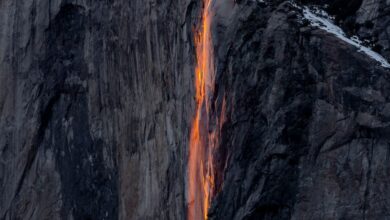How Do You Spot Rare Wildlife on a Safari
Embarking on a safari is a thrilling adventure that opens the door to the enchanting world of wildlife. The experience is accentuated when you have the chance to spot rare animals. Whether you are a seasoned traveler or a first-time adventurer, knowing how to enhance your chances of witnessing elusive species can elevate your safari experience to new heights. With the right knowledge and approach, you can navigate the wilderness with confidence and excitement.
Understanding Habitats
The first step in spotting rare wildlife is understanding their preferred habitats. Each species has unique environmental requirements. For example, leopards often reside in thick forests and trees while cheetahs favor open grasslands where they can spot prey from a distance. Researching the specific locations where these animals thrive will help you identify likely areas during your safari. Additionally, consider the time of year; some animals are more active during certain seasons, and knowing their patterns can significantly increase your chances of sightings.
Timing Your Safari
When planning your safari, timing is crucial. Early mornings and late afternoons are typically the best times for wildlife viewing. During these cooler hours, animals are more active, making it easier to spot them. Midday heat often drives animals to seek shade, making sightings less frequent. If possible, consider scheduling your safari excursions during these prime times to maximize your chances of encountering rare species.
Choosing the Right Safari Vehicle
The type of safari vehicle can also impact your wildlife spotting experience. Open-top vehicles provide unobstructed views and a closer connection to nature, allowing you to hear sounds and smell the environment. Additionally, smaller vehicles can navigate more easily through dense areas, increasing the likelihood of rare sightings. Work with reputable safari companies that prioritize wildlife viewing and utilize well-equipped vehicles for the best experience.
Listening and Observing
Wildlife spotting is as much about listening as it is about seeing. Many rare animals are more often heard than seen. Pay attention to the sounds around you; the calls of birds, the rustling of leaves, or the distant roar of a lion can indicate nearby wildlife. Also, train your eyes to scan the landscape carefully. Look for movement, unusual shapes, or the flick of a tail. It’s often the subtle details that reveal the presence of elusive animals.
Local Guides and Knowledge
Hiring a knowledgeable local guide can significantly enhance your safari experience. Guides possess invaluable insights into animal behavior, tracks, and signs that can lead you to rare wildlife. Their expertise allows them to interpret the landscape and identify potential sightings that you may overlook. Moreover, local guides often have established contacts with other guides, increasing the chances of sharing information about recent animal movements.
Patience and Persistence
Spotting rare wildlife requires patience and persistence. Wildlife is unpredictable, and there are no guarantees of sightings. Embrace the experience and understand that sometimes the journey is as rewarding as the destination. Spend time in tranquil locations, allowing nature to unfold around you. The longer you remain still and observant, the more likely you are to witness extraordinary moments.
Respecting Wildlife
While the thrill of spotting rare animals is exhilarating, it’s essential to respect their space. Maintain a safe distance and follow your guide’s instructions to avoid stressing the animals. Responsible wildlife viewing ensures the conservation of these species and their habitats for future generations. Remember, the goal is to observe and appreciate wildlife in their natural environment, not to disturb them.
Embracing the Unexpected
Lastly, remain open to the unexpected. While you may have specific rare animals in mind, wildlife often surprises us. A chance encounter with an unusual species might become the highlight of your safari. Embrace the beauty of spontaneity and allow the adventure to unfold naturally.
Capturing the Experience
In summary, spotting rare wildlife on a safari is a blend of preparation, patience, and respect for nature. By understanding habitats, timing your excursions, and enlisting knowledgeable guides, you enhance your chances of witnessing the extraordinary. Cherish each moment and the stories the wilderness shares, for the magic of a safari lies not only in the rare animals you see but in the journey itself.







